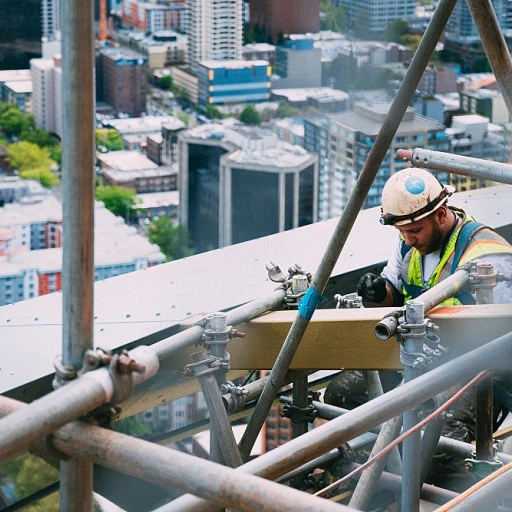
Understanding Psychological Safety
Creating a Safe Environment for Growth
Understanding psychological safety is crucial for fostering a workplace where employees feel safe to express themselves without fear of negative consequences. This concept, introduced by Harvard Business School professor Amy Edmondson, emphasizes the importance of a safe environment where team members can take risks, voice their opinions, and engage in open dialogue. In such a setting, employees are more likely to contribute ideas and feedback, which can significantly enhance team dynamics and overall performance.
Psychological safety is not just about feeling comfortable; it’s about creating a culture of trust and learning. When employees feel psychologically safe, they are more inclined to participate in discussions, share innovative ideas, and collaborate effectively. This is particularly important in high-performing teams, where the ability to communicate openly can lead to breakthrough solutions and improved outcomes.
Organizations that prioritize psychological safety often see a positive impact on employee development. By fostering an environment where people feel safe to learn and grow, companies can help their employees reach their full potential. This is especially beneficial for high potential employees, who thrive in settings that encourage exploration and creativity.
For leaders and managers, understanding the stages of psychological safety is essential. It involves recognizing the different levels at which team members feel secure and addressing any barriers to open communication. Leadership development programs and safety training courses can equip leaders with the skills needed to nurture a psychologically safe workplace.
To delve deeper into how psychological safety can enhance team performance, consider exploring the dynamics of employee strengths and weaknesses. This resource provides insights into how understanding individual capabilities can further support a safe and productive work environment.
The Role of Psychological Safety in Employee Development
Fostering Trust and Open Communication
In the workplace, the concept of psychological safety plays a crucial role in employee development. Imagine a work environment where team members feel comfortable sharing their ideas without fear of judgment. This is what a psychologically safe environment looks like. It becomes possible for employees to offer and receive feedback constructively, thereby enhancing both personal and team growth. When team leaders commit to creating psychological safety, they increase the likelihood of fostering open communication. Leaders can enhance this dynamic by valuing employee input and encouraging diverse perspectives. By promoting such a culture, organizations help build trust, a vital element in effective team dynamics. As leaders, it's essential to realize that fostering trust within a team not only improves morale but also bolsters high performing teams.Influencing Emotional Intelligence and Leadership Development
A psychologically safe workplace also strengthens the emotional intelligence of employees. As individuals feel safe to express themselves, they learn to better understand and manage emotions—both their own and those of their colleagues. This kind of interpersonal growth is vital for those in or aspiring towards leadership roles. Leadership development initiatives often include safety training to encourage empathy and understanding among leaders. As these skills grow, so does the ability to nurture a supportive environment for others. Encouraging leaders to develop their emotional intelligence through comprehensive course materials and training programs can profoundly impact workplace safety dynamics.Building a Learning Culture and Organizational Success
Incorporating psychological safety into the workplace also contributes to creating a learning culture. Employees who feel psychologically safe are more inclined to take risks and try new approaches without the fear of negative repercussions. This openness and willingness to experiment can lead to innovative solutions and continuous improvement. Organizations that prioritize safety training and build an inclusive work culture see significant benefits beyond just employee satisfaction. They enjoy increased retention rates, higher work productivity, and a more engaged workforce. Ultimately, nurturing psychological safety is an integral step towards organizational success and sustainable growth. In essence, emphasizing psychological safety in the workplace sets the stage for a thriving, innovative, and adaptable organization. For further insights on how employee strengths and weaknesses can be leveraged in developmental processes, consider exploring this comprehensive analysis.Implementing Psychological Safety Training
Building a Safe Environment for Effective Learning
Creating a psychologically safe workplace begins with leaders who understand the critical role trust and open communication play in team dynamics. Safety training courses focused on psychological safety aim to equip leadership with the skills needed to foster a culture where team members feel comfortable expressing themselves without fear of negative consequences. A crucial component of implementing this training is understanding the concept of psychological safety as a continuous process. These courses often include practical exercises and role-playing scenarios that highlight the importance of introducing safety minutes during meetings, encouraging any form of feedback, and recognizing each team member's contribution to help build trust and transparency.Utilizing Leadership Development Tools
Leadership development is vital in maintaining a high-performing environment where psychological safety is a norm. Training leaders to recognize and support the stages of psychological development within their teams can have a profound impact on cultivating a safe environment. Leaders learn to employ emotional intelligence as they navigate the intricate dynamics of employee interactions, fostering an atmosphere where everyone feels safe to learn, grow, and collaborate.Shaping a Robust Organizational Culture
For organizations aiming to cultivate a safe workplace, the comprehensive integration of psychological safety at all levels of the organization is essential. Not only does this enhance team cohesion, but it also sets a precedent for how learning and growth are approached within the organization. By prioritizing the atmosphere of psychological security, teams are more likely to engage in creative solutions, contribute unique ideas, and ultimately, help drive the organization forward. Ultimately, the implementation of psychological safety training establishes a foundation for an inclusive, innovative, and resilient work environment. This commitment to safety as a core component of workplace culture ensures that employees feel supported and motivated to excel at every level.Benefits of Psychological Safety for High Potential Employees
Empowering Employees to Reach Their Full Potential
Developing high potential employees extends far beyond conventional training sessions. The role of psychological safety in this development cannot be overlooked. When workplace psychological safety is prioritized, employees feel safe expressing themselves without fear of negative consequences. This is particularly crucial for high performing individuals who thrive in environments where creativity and innovation are encouraged.- A psychologically safe environment promotes open feedback, crucial for learning and improvement. Employees who trust their teams are more open to honest discussions, thus enhancing their skills effectively.
- Leadership plays a vital role in nurturing this safety. Leadership development programs should focus on elevating leaders who respect and value team members' inputs, reinforcing a safety culture within their organization.
- Course materials and safety training designed around psychological safety concepts equip employees to collaborate better, understanding diverse work styles and interpersonal dynamics.
Measuring the Impact of Psychological Safety Training
Evaluating the Impact of a Respectful Work Climate
Measuring the impact of psychological safety training is crucial to determine its effectiveness in fostering a respectful and supportive work climate. This assessment not only helps organizations gauge the success of their initiatives but also guides them in refining strategies to further benefit high potential employees.- Increased Employee Engagement: When employees feel safe in their teams, they are more likely to engage fully in their work. This increased engagement often translates to improved performance and innovation within the organization. By observing participation levels in team activities and meetings, organizations can measure enhancements in workplace psychological safety.
- Feedback and Communication: A psychologically safe environment encourages open dialogue. Organizations can measure improvements in feedback processes by analyzing the frequency and quality of communications among team members. Feedback surveys can provide quantitative data on how comfortable employees feel in voicing opinions and concerns.
- Reduction in Turnover Rates: Organizations fostering a culture of safety in the workplace tend to have lower employee turnover rates. By comparing turnover statistics before and after implementing safety training, leaders can assess how a safe environment impacts employee retention.
- Enhanced Leadership Development: Psychological safety training often leads to improved leadership skills, as leaders learn to create and maintain a safe environment for their teams. Observing advancements in leadership initiatives and their influence on team morale and performance can serve as indicators of the training's success.
- Tracking Emotional Intelligence Growth: Organizations can focus on employees' emotional intelligence growth as a measure of success. This involves monitoring improvements in empathy, self-regulation, and interpersonal skills which are critical in maintaining a healthy workplace culture.
Case Studies: Success Stories
Real-World Applications of Psychological Safety Training
In the ever-evolving landscape of modern workplaces, fostering a culture where team members feel safe to express themselves is paramount. Organizations that have embraced psychological safety training often witness remarkable transformations. Let's delve into some real-world examples that highlight the impact of such initiatives.
Tech Company Revolutionizes Team Dynamics
A leading tech company recognized the need for a safe environment where employees feel empowered to share ideas without fear of judgment. By implementing comprehensive safety training, they cultivated a culture of trust and open communication. The result? Teams became more cohesive, and innovation flourished as employees felt safe to propose bold ideas. This shift not only enhanced team performance but also contributed to the company's overall success.
Healthcare Organization Enhances Employee Engagement
In a high-stakes healthcare setting, creating psychological safety was crucial for improving patient care and employee satisfaction. Leadership development programs focused on emotional intelligence and feedback mechanisms helped leaders foster a psychologically safe workplace. As a result, employees reported feeling more engaged and valued, leading to improved patient outcomes and a more harmonious work environment.
Financial Firm Boosts Leadership and Trust
A financial firm sought to improve its leadership culture by integrating psychological safety into its training programs. Leaders were trained to recognize the stages of psychological safety and implement strategies to help team members feel secure. This approach not only strengthened trust within teams but also encouraged a culture of continuous learning and feedback. The firm saw a notable increase in employee retention and satisfaction.
Manufacturing Plant Sees Productivity Gains
In a manufacturing setting, safety minutes were traditionally focused on physical safety. However, by expanding the scope to include psychological safety, the organization saw significant improvements in team morale and productivity. Employees felt more comfortable voicing concerns and suggestions, leading to process improvements and a more collaborative workplace culture.
These case studies underscore the transformative power of psychological safety training. By prioritizing a safe work environment, organizations can unlock the full potential of their high-performing teams, fostering a culture of trust, innovation, and growth.












